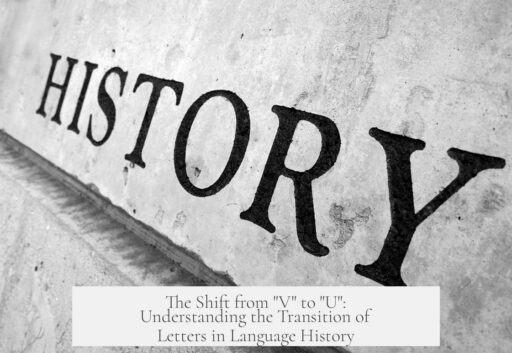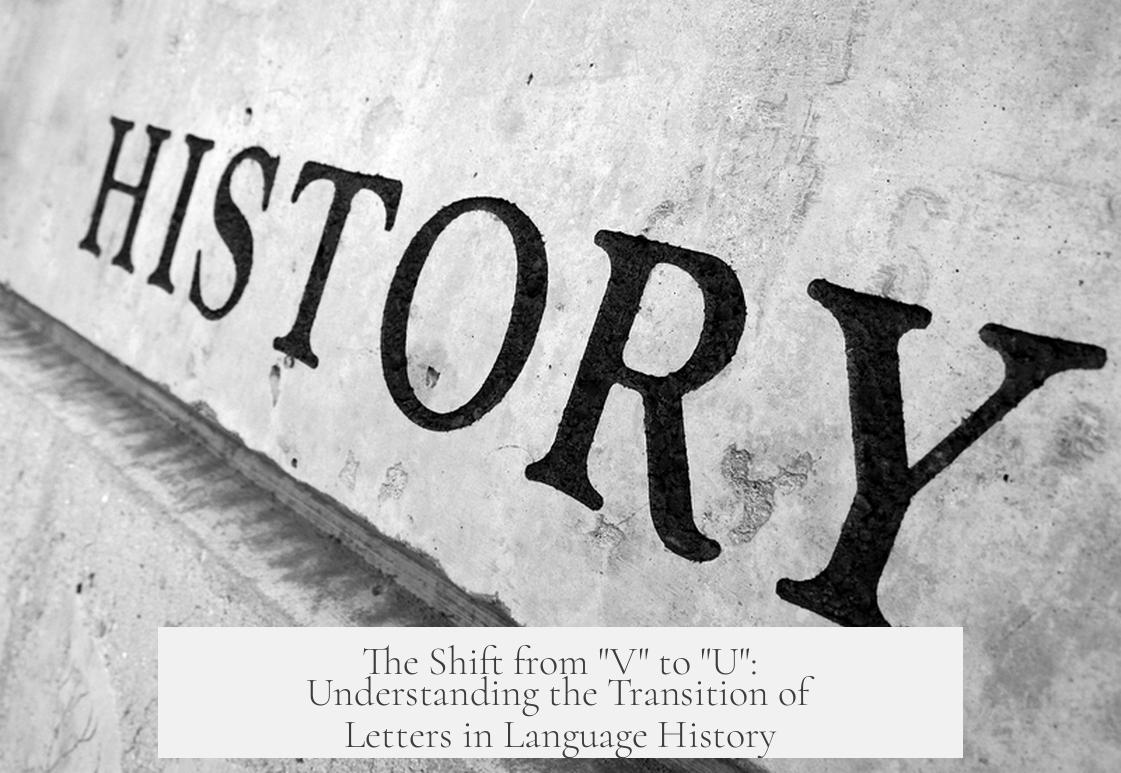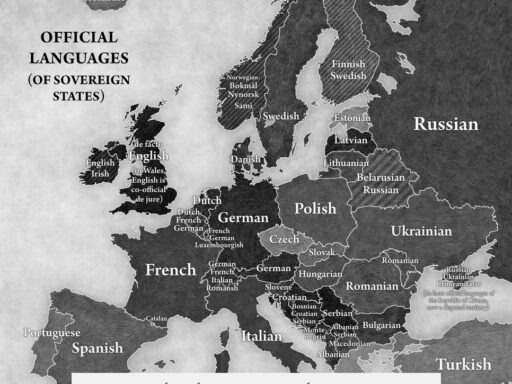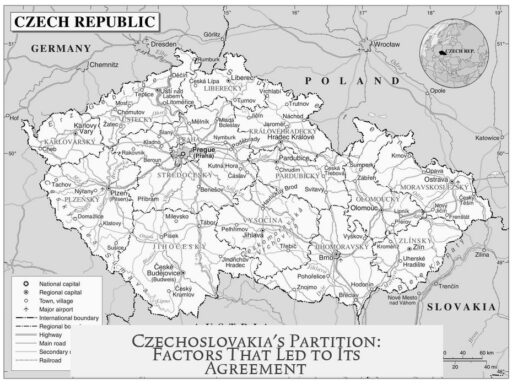The replacement of “v” with “u” did not occur as a direct substitution. Instead, the letter “v” evolved into two distinct forms, “v” and “u,” based on their position within words. This differentiation began in the Late Middle Ages, around the 14th century, rather than a full replacement of one by the other.
In medieval scripts, both “v” and “u” originated from the same letter representing the ancestor sound /u/ and the consonant /v/. Scribes used a pointed form “v” at the beginning of words and a rounded form “u” in the middle or end of words, regardless of whether the sound was a vowel or consonant. For example, the word “valor” began with a “v” while “have” was written as “haue.” This convention produced spellings like “vpon” for “upon.”
The earliest recorded distinction between the letters “u” and “v” appears in a Gothic script dated 1386. This marks the start of treating “u” and “v” as separate letters, though the sounds they represented had overlapped before. The process spread gradually, influencing how words were printed during and after the Late Middle Ages.
Historically, Roman inscriptions used the letter “V” for multiple sounds, including the vowel /u/ and consonants /v/ and /w/. The Romans did not use a separate letter “U;” hence, there was no original need to differentiate these sounds with different letters. The medieval adaptation to split “v” into “v” and “u” helped clarify text and sound distinctions in writing and print.
The evolution of “v” and “u” reflects a gradual typographic and phonetic development rather than a simple replacement. This change coincided with advances in Gothic and later type design, aiding readers in distinguishing where vowel and consonant sounds occurred.
- “V” and “U” originated from the same letter in medieval scripts, differentiated by position in a word.
- Distinction between “u” and “v” letters appears first in Gothic script from 1386.
- Romans used “V” for vowel and consonant sounds, no separate “U” existed.
- Late Middle Ages marked the gradual split of “v” into two letters, reflecting different sounds and positions.
When Did We Replace “V” With “U”? The Story Behind Two Letters

Did we really replace “v” with “u”? Not quite. Instead, the letter ‘V’ gradually split into two distinct forms: ‘V’ and ‘U’. This transformation didn’t happen overnight. It started in the Late Middle Ages, probably around AD 1300, when scribes and printers began differentiating these shapes depending on their position in a word rather than their sounds.
Sounds confusing? Let’s dive into this fascinating journey of letters, uncovering how and why our alphabet gained its modern pair of ‘v’ and ‘u’.
The Roman Backstory: A Time of Single Letters
Before the Middle Ages, the ancient Romans used only the letter ‘V’ to represent not one but multiple sounds. Their “V” stood for the vowel /u/, the consonant /v/, and even the /w/ sound. Yup, a busy letter doing triple duty. Because the alphabet was simpler and had fewer characters, no separate letter ‘U’ existed to clarify these sounds. For Romans, context and pronunciation rules filled in the blanks.
Imagine reading a text where “VIVIVS” could mean different things based on context or the reader’s knowledge. That’s the environment from which the letters V and U eventually evolved.
The Late Middle Ages: When V Met U
Fast forward to the Late Middle Ages, somewhere around 1300 AD. Written scripts were evolving, and so were the demands of clarity in manuscripts and printed books. Writers began experimenting with two forms of what was originally the letter ‘V’.
Here’s the twist: the letter’s shape changed depending on its position in the word, not its sound. The pointed form ‘v’ appeared at the beginning of words, while the rounded form ‘u’ showed up in the middle or at the end. So, “valor” began with a pointed ‘v’, while “have” might be spelled “haue”. Similarly, “upon” was written as “vpon”.
This style was common in Gothic scripts and is the earliest recorded distinction seen as far back as 1386. But—here’s a kicker—both ‘v’ and ‘u’ were still used interchangeably for vowel and consonant sounds. They were shapes first, letters second.
Why the Change? Practicality, Clarity, and the Printing Press
So why split the letter? One big reason was visual clarity. Manuscripts filled with identical-looking “V” characters could confuse readers, especially at word boundaries. The change helped readers recognize word starts more quickly. Think about it: a sharp ‘v’ at the start stands out from the softer round ‘u’ inside a word.
Then came the printing press in the 15th century. Printers needed standardized typefaces and clearer letter distinctions. This pushed the evolution toward separate letters for different sounds and shapes. Eventually, ‘U’ came to represent the vowel sound /u/, and ‘V’ the consonant /v/, the way we use them now.
The Result: Letters With Distinct Identities
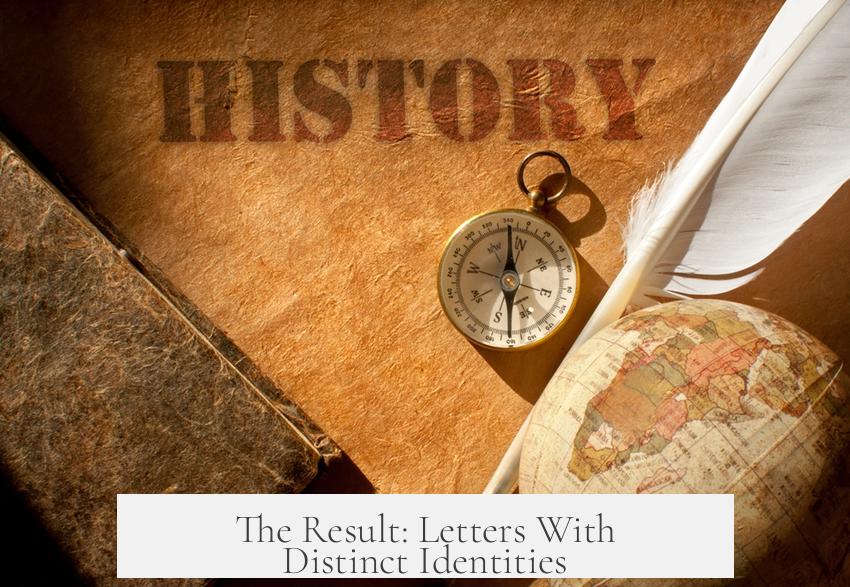
By the 17th century, the division was clear. Now, when we see “valley” or “uphold,” the letters ‘v’ and ‘u’ align with their modern pronunciations and positions. It’s a fascinating journey from a single letter doing triple duty to two letters with clear roles.
This Letter Split: A Peek Into Language’s Fluidity
So, the big takeaway? Language and writing are fluid, always adapting. The “replacement” of ‘v’ with ‘u’ never really happened as a wholesale swap but as a natural evolution shaping how our alphabet looks and sounds.
This evolution wasn’t a planned revolution but a slow shuffle influenced by handwriting styles, practical reading needs, and printing technology innovations. It teaches us to appreciate the quirky and winding paths language takes over centuries.
Practical Tips and Fun Facts
- Look for the shape: When reading old manuscripts, spot a pointed ‘v’ at the start of words and rounded ‘u’ inside. It’s a clue you’re reading medieval text.
- Printing Influence: Recognize how the press shaped modern literacy. It’s an early example of technology changing language habits.
- Why do some fonts look different? Some fonts and handwriting styles still reflect these historic shapes, so don’t be thrown off by quirky ‘u’ and ‘v’ forms.
In Closing: What Does This Mean for Us?
Next time you write or type a ‘u’ or ‘v’, remember these letters share a long history. They are siblings separated by time and style. Their story is a perfect example of how human communication constantly molds itself for clarity and efficiency.
So, in answer to the question: we didn’t replace ‘v’ with ‘u’. Instead, the medieval scribes split a single letter into two based on word position, evolving over centuries into the distinct letters we use today.
Isn’t it cool that something as simple as a letter can tell us stories about history, technology, and the way we think?
When did the letters V and U start to be distinguished?
The split of V into V and U began in the late Middle Ages, around AD 1300. Before that, both forms were used interchangeably.
How were the letters V and U used differently in medieval writing?
In medieval scripts, ‘v’ was used at the start of words, and ‘u’ appeared in the middle or end. This was true regardless of the sound they represented.
Did the Romans use the letter U separately from V?
No. The Romans only used the letter V for both V and U sounds, as well as for the W sound, so there was no distinction.
When was the first recorded instance of distinguishing U from V?
The first clear distinction between ‘u’ and ‘v’ appeared in a Gothic script dated to 1386.
Was the letter U created to replace V?
Not exactly. The letter U did not replace V; it evolved as a separate form derived from the original V, used depending on position in the word.
